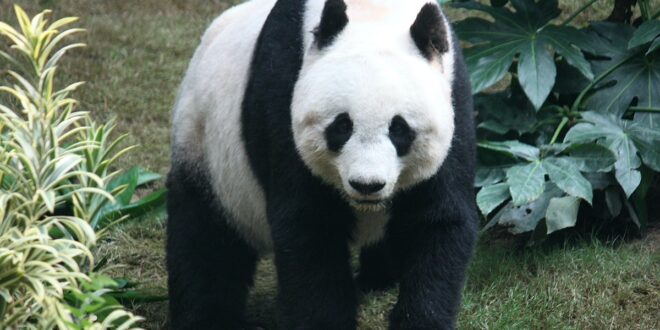By Suri Zheng
Giant Pandas are one of the top animals on the endangered animals list. Estimated only about 1,800 giant pandas live in the wild (WWF). Around 633 giant pandas are in captivity. These pandas are adored worldwide and are considered China’s national treasure, in fact, they are “first-class protected species” according to China’s Wild Animal Protection law.
Giant pandas usually reside high in the mountains and forests of southwest China, mainly around the Yangtze river basin, because of this, they are excellent tree climbers. These bears feed on fresh bamboo every day as their primary source of food. They usually can eat up to 26 to 84 pounds of new bamboo every day. When a newborn panda is born, they are usually the size of butter and as they grow older they can grow up to almost 4 feet. Female pandas can grow to 200 pounds, while males can grow to 300 pounds! For most pandas in the wild, the life span is about 15-20 years, but in captivity, it can increase up to 10 years.
Giant pandas can play a critical role in their habitats. While they eat bamboo, they can spread new bamboo seeds through their waste creating more chances for new bamboo to grow. Giant pandas are also considered umbrella species, meaning that when we protect these pandas we are also protecting many other species that reside in the same habitat as these pandas.
A Giant panda doesn’t have many animal predators, so why is it on the Endangered Animals list? Two big reasons are because of hunting and habitat loss. Hunting these cute bears was a big problem in the past, but it has since toned down because of the Wildlife Protection Act that was signed in 1988. That doesn’t mean that it has completely stopped. These pandas sometimes can get stuck in traps or snares that are set for deer and other animals. Habitat loss is another crucial factor in the endangerment of these animals. Building roads and infrastructure can isolate giant pandas from food or other pandas and access to forests. The Chinese government has made more than 50 panda reserves around the area. Still, scientists estimate that only 67% of the wild panda population lives in these reserves, and only about 54% of that land is being protected (WWF).
In conclusion, although giant pandas are endangered, people worldwide are trying to protect them. Since the beginning of president Mao’s term, China has been renting out giant pandas to places worldwide to continue to protect these fluffy and cute endangered species.
 Tempus Magazine By Students, For Students
Tempus Magazine By Students, For Students 



